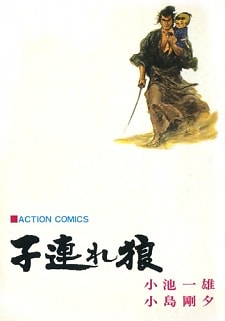Jul 27, 2021
Deleted my older MAL profile Kaushik17
Shotaro Ishinomori is a mangaka known to few, but whose influence on manga and other forms of media is undeniable. Starting his career as an assistant of Tezuka, fans of the latter would see his influence in Ishinomori’s works, especially in character designs and panelling. Having said this, it isn’t my intention to undermine Ishinomori in any way, but rather highlight the rather close bond the two shared throughout their lives.
As for the man of the hour himself, with iconic series such as Cyborg 009, a series that I remember from my nascent days as an anime fan back in
...
2004 to the Super Sentai and Kamen Rider series which have had tremendous impact over popular culture, he is without a doubt, one of the pillars of the medium. Given his reputation and the seemingly high praise I received of his works, I was eager to find a ‘Buddha’, aka the work which would enable me to understand his mastery of the craft personally. This was a search which went on for a few years until a good friend of mine brought this work to my attention. And that’s how I decided to pick this up.
Jun: Shoutarou no Fantasy World was a manga published in COM, between 1967 to 1971. COM, for more information was a magazine started by Tezuka as a response to Garo, a gekiga magazine. The magazine was created with the sole purpose of pushing the boundaries of manga to its absolute extremes. Being aware of this, I was fully expecting to be taken on a similar journey.
I sure was not disappointed. The series follows the main character, Jun over several surreal escapades. Written as standalone stories for most part, these experiences challenge our main character’s beliefs or simply shows the outcome of his actions. There is no sense of time and space and we are at the mercy of Ishinomori as he does his utmost to elevate his craft to immortality. And in this it closely resembles Strange Beings, a tale from phoenix, where sensation of time and space is completely distorted and we are at the mercy of the creators.
Jun, as a character is rather simply written. He has his fears and aspirations like any other individual. But in the hands of Ishinomori, he also as the anchor for the reader as they drift in the sea of imagination created by Ishinomori. Jun could potentially be the mangaka himself serving as Virgil, or a Phoenix for the manga fans, guiding us through his world, in order to avoid getting lost in the ideas thrown around. Other characters flow in and out of the story, but ultimately only serve to present the ideas and themes that Ishinomori wishes to present to the reader. People familiar with his works would recognise several characters from other works, blending fiction with reality.
My favourite story from this would be the one where Ishinomori refers to the wheel of life and death, a reference to the concept of Samsara, one of the fundamental beliefs of the Dharmic faiths. And thereby goes onto further point out the impermanence and cyclicity of life. It was at this moment that my respect transformed to admiration.
The art itself is quite dated, given how far back in time it was written. But fans of Tezuka would find it easy to understand given how close their art was. Some of the panel work is simply mindboggling and does a phenomenal job in conveying the themes of the work. It is quite clear that Ishinomori had a great sense of perspective and control over his craft, being able to create quite detailed landscapes and very minimalistic imagery, with the least effort applied. He truly did a terrific job in highlighting the strength of the medium.
Onto potential criticisms the work might receive. To start off, the work is not a single story per se, but rather a collection of ideas which is held together by the presence of the main character. While this might lead to a case where we are potentially lost in the great sea of ideas, Ishinomori does a great job in ensuring that the ideas are concise and thoroughly explored before moving onto the next one in the following chapter.
There is also no character development or a cast whom you can follow outside the main character. The lead character, Jun, does not have a profound epiphany over the course of the work. Instead, his job is to do his utmost to flesh out the ideas and guide us through those turbulent waters. And his performs this job rather capably, only going to show the degree of control Ishinomori had when writing this work.
To conclude, this work might have been the perfect way for me to start my introduction into his world and I eagerly anticipate to experience them in the near future. It showed me the reasons why I love this medium a lot. As for others, this is a work where you would see the potential of manga being manifested when handled under someone who cares about their craft. Highly recommended
Reviewer’s Rating: 10
What did you think of this review?
Nice
 0
0
Love it
 0
0
Funny
 0
0
Confusing
 0
0
Well-written
 0
0
Creative
 0
0Show all



























